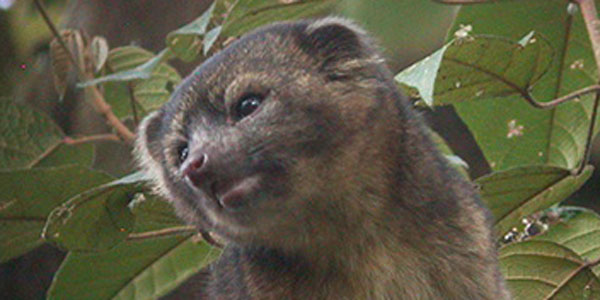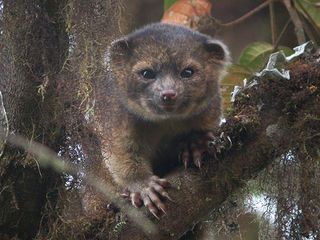Scientists Discover New Mammal, Name It Olinguito

For years, scientists have been capably identifying and categorizing a variety of species, oftentimes bugs or insects with a few extinct dinosaur species thrown in. However, it’s much rarer that a group of scientists comes across a brand new breed of mammal—especially one hidden in plain sight.
The new species is called an olinguito. It’s a cute and fluffy little puffball of a creature with beaded eyes, although it is carnivorous. The South American spends its time at high elevations, living in the dense fog of the Andean cloud forests, but for years, the creature was mistaken as an olingo, a member of the raccoon family that typically has brownish fur and lives at lower elevations. About a decade ago, a Smithsonian zoologist named Kristofer M. Helgen came across some reddish pelts and later some skeletons that could not have belonged to the olingo species. Thus began a search to find a brand new mammal that has actually existed for a very long time.
On Thursday, the Smithsonian National Museum of Natural History put on a press event to introduce the olinguito, led by Helgen and expert Roland Kays. According to Smithsonian Magazine, his team found anatomical and DNA evidence that supports the theory the zoology team initially put together that the olinguito is a totally different creature, which means that the scientists have encountered the first new carnivorous mammal species to be discovered in the Western Hemisphere in 35 years. Back in 1978, scientists discovered the Columbian Weasel, but the Western Hemisphere has been bereft of new discoveries in the time since.

The olinguito’s similarities to the olingo can’t be ignored. The olinguito shares about 90% of its DNA with the olingo, which is quite a bit (although maybe not enough to mistake the creatures for one another). Regardless, the team uncovered evidence that in a zoo in the 1960s, an olinguito was put into an enclosure with olingos, under the assumption the animals were all the same breed. Zoo workers were stumped when the smaller creature would not breed with the olingos in the collection. That should have probably been the first clue, but it took several decades before Helgen and his team unraveled the mystery, giving the creature a name that in Spanish means “little olingo.”
Over the last several hundreds of years, humanity has spread across the globe, conquering new lands, but also exploring, cultivating and creating. Still, the discovery of the olinguito proves that there is still plenty about our immediate world, as well as the galaxies beyond, that humanity has not uncovered. If you want to learn more about the recently discovered mammal, you can look into the published findings over at the journal ZooKeys.
Photo Credits @Mark Gurney/ Smithsonian
CINEMABLEND NEWSLETTER
Your Daily Blend of Entertainment News

Jessica Rawden is Managing Editor at CinemaBlend. She’s been kicking out news stories since 2007 and joined the full-time staff in 2014. She oversees news content, hiring and training for the site, and her areas of expertise include theme parks, rom-coms, Hallmark (particularly Christmas movie season), reality TV, celebrity interviews and primetime. She loves a good animated movie. Jessica has a Masters in Library Science degree from Indiana University, and used to be found behind a reference desk most definitely not shushing people. She now uses those skills in researching and tracking down information in very different ways.










